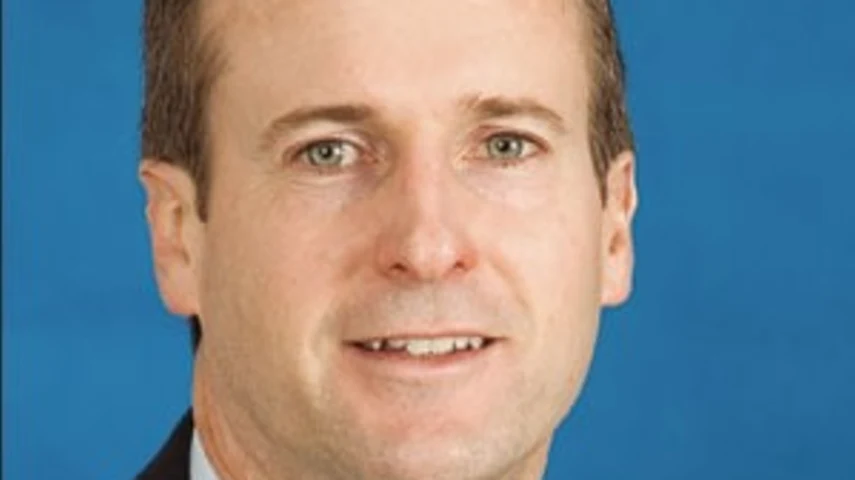Why investors can’t afford to be complacent



The world is going through a unique period, so what might have worked in the past will not work in the future. Dominic McCormick says now is not the time to be complacent.
While the view looking backwards is usually clearer, investing is primarily about looking forward, no matter how difficult this often is.
Of course, past is prologue to some extent but not in a simplistic linear way – and certainly not in a way that justifies the blind performance-chasing approach that many less disciplined investors seem to follow.
From this perspective, and despite strong returns from equity markets recently, I believe building investment portfolios today is as difficult as it has been at any time in recent decades.
Why is this so?
Interest rates are at record low levels – and may still go lower in Australia – providing little return from “safe” bank and fixed interest investments.
The events in Cyprus involving “taxing” of bank deposits (principal, not interest) and the increasingly vulnerable status of many government bonds given high debt-to-GDP and record low yields is raising the question of whether any “safe” assets actually exist.
In any case, low interest rates are pressuring investors to take on additional risk and are pushing up the prices of most investments, especially those yield-related, resulting in their longer-term expected returns falling towards – or even below – cash, and their probability of major capital losses in the short-medium term increasing significantly.
The global economy (especially the developed world) needs to de-lever, given excessive levels of private and/or government debt, and this process will weigh on global economic growth and future corporate earnings.
Many central banks are experimenting with unconventional monetary policy measures in an attempt to stimulate growth.
These approaches are so far having limited impact on growth, but both their continued implementation and their eventual withdrawal risk a range of other macroeconomic consequences and distortions including dangerous bubbles/busts in some asset classes.
Three investment approaches
In very general terms there are three broad ways that advisers and investors can approach investing in this environment. (These don’t involve simply chasing what’s currently performing).
-
The conventional diversified approach is a long-term, largely buy-and-hold diversified portfolio across mainstream assets, primarily equities and fixed interest. This is the traditional “balanced” or 60/40 approach. (Although more aggressive investors might be more fully skewed to equities and more defensive investors to bonds/cash).
In terms of portfolio construction this could involve passive or active exposures or a mix as appropriate. Some tilting exposure towards various factors, eg, value, growth, low volatility, could also be a feature of this approach. -
The flexible/dynamic diversified approach attempts to be more forward-looking and active over time, allocating primarily to those assets and strategies that on a valuation basis are currently attractively priced and positioned to achieve reasonable absolute returns in coming years.
This approach may exclude even some mainstream assets/sectors and tends to be contrarian in nature, and thus will typically under-perform the conventional approach during strong equity bull markets. Obviously this approach is much more dependent on skill of those selecting the various assets. - The “safe haven” or opt-out approach: Notwithstanding my comments above on the difficulty of finding safe assets, this approach essentially involves investors giving up on any sort of diversified investing program and opting for bank deposits or other “safe” assets. Some investors lump “safe” bricks and mortar property into this category.
The conventional approach
There are valid arguments for and against each of these approaches. If one sees global economies and markets on a path to normality and average or above-average economic growth, the conventional approach makes sense.
However, in a subdued growth environment the expected future returns of this approach are currently hampered by extremely low starting yields in the cash/fixed interest component and the now-elevated valuations across many equity markets (before even considering the still-significant macroeconomic risks).
Of course, this doesn’t mean this approach cannot continue to do well in the short- to -medium term, given the degree of monetary accommodation from central banks and the yield-chasing behaviour of investors – although there is the risk it could all end rather badly.
However, at least from a business perspective the conventional approach has the benefit that when it performs poorly one will have plenty of company.
The flexible approach
The second, more flexible/dynamic approach is worth considering if one believes:
The current global pressures and valuation issues discussed above have created risks that mainstream assets in a conventional portfolio will struggle to deliver acceptable returns and risks in coming years;
One has, or has access to, the skills to implement this approach competently; and
One can handle the “business risks” that such an approach entails, as the nature of this approach implies a path of performance that can be very different to a conventional approach over at least the short- to -medium term.
This last point is particularly important. As Keynes said, it is often better to fail conventionally then to succeed unconventionally. Adopting any sort of contrarian approach to investing is hard to implement and even harder to stick with over time.
Seth Klarman, the well-known value investor of Baupost Group, recently wrote of these challenges:
“Investing, when it looks the easiest, is at its hardest. When just about everyone heavily invested is doing well, it is hard for others to resist jumping in.
But a market relentlessly rising in the face of challenging fundamentals – recession in Europe, slowdown in China, fiscal stalemate and high unemployment in the US – is the riskiest environment of all”.
The “opt-out” approach
Regarding the third “opt-out” approach, one can understand why many investors and some advisers have effectively given up on investing in recent years, given disappointing returns and the challenges through and post the GFC.
Simplicity has benefits in terms of cost and emotional comfort and many investors simply want to focus their investments on what they perceive are safe assets.
Still, as Cyprus has shown, perhaps there is no such thing as a safe-haven asset, particularly if one considers the threat of inflation impacting real returns over extended periods.
Often such investors have a false perception of the safety of some assets such as residential property, particularly if the portfolio is overly concentrated. In any case, this approach hardly makes sense as a robust business model for advisers.
Which one or mix?
Of course, perhaps a mix of the first and second approaches can make sense, and in practice many conventional portfolios are increasingly incorporating elements of the flexible approach (eg, dynamic asset allocation, use of alternatives).
It is relatively clear what the conventional approach looks like now, as it operates within a smaller universe of assets and takes a more static approach to allocation.
The more flexible approach does not have such clarity, partly because different parties will always produce different portfolios and partly because the portfolios may change markedly as market dynamics/valuations change.
For example, the elimination of the excessive pessimism and attractive valuations in equity markets from as recently as mid-2012 as markets have rallied strongly should be resulting in somewhat different portfolios under the flexible approach.
Elements of flexible approach
So what do I believe should be some of the elements of this flexible investment approach now? They are:
Increasing caution on most equity markets. This involves selling into strength and skewing equity towards those selected markets and sectors that have participated less in the rally and offer better value.
Considering long volatility assets and/or protection strategies to partially protect from any major market weakness.
Continuing caution on fixed interest given low yields, with very little if any exposure to nominal government bonds and keeping overall duration short.
Holding a reasonable exposure to cash to take advantage of opportunities in market weakness.
Holdings in real/inflation-protected assets, given the longer-term risks of inflation and currency debasement.
Increasing allocation to selected alternative strategies with less market risk, including managed futures, global macro, relative value, market neutral.
Less reliance on Australian assets only, given the concentrated nature of the Australian market and increased vulnerability of the Australian economy.
A significant exposure to foreign currencies.
Of course implementing a more dynamic approach is inherently difficult, because often one will be doing the opposite of what has worked recently and/or what the majority of investors are currently doing (and the media is promoting). This is where the contrarian element and looking-forward approach is crucial.
Eyes on the future
Everyone will have a view, but I believe now is one of those times when investors should not expect to be able to complacently buy what has worked well recently and expect good medium- to -long-term returns.
The global economy is going through a very unique and challenging environment as it deals with excessive private and sovereign debt levels and with resultant slow growth.
Extreme monetary policy and record low interest rates are creating a range of distortions and potential bubbles that could end quite badly. Investors are increasingly making investment decisions for the wrong reasons: eg, “there are no alternatives” or “fear of missing out” rather than on a fundamentally-based assessment of the future.
A more flexible/dynamic approach incorporating disciplined changes to asset allocation over time, as well as a reasonable allocation to alternative assets and strategies, come with no guarantees they will deliver a better result in such an uncertain world.
However, it does attempt to look forward and try to skew away from overvalued assets and/or look to protect from permanent capital losses caused by overpaying for assets or sectors subject to over-valuation or bubbles.
Importantly though, this approach should only be judged over multi-year time periods covering full market cycles – and ideally looking back from a point in time when the current major global macroeconomic challenges which originated in the multi-decade build-up of debt and resultant GFC are largely behind us.
That point still looks to be some years away – and likely to be towards the end of this current decade.
Dominic McCormick is the chief investment officer of Select Investment Partners.
Recommended for you
In this episode of Relative Return Insider, host Keith Ford and AMP deputy chief economist Diana Mousina break down the spike in inflation numbers and what it means for the possibility of a rate cut as we move into the new year.
In this episode of Relative Return Insider, host Keith Ford and AMP economist My Bui explore Prime Minister Anthony Albanese’s trip to the US and the critical minerals deal stemming from his meeting with President Donald Trump.
In this episode of Relative Return Insider, host Keith Ford and AMP chief economist Shane Oliver unpack the latest unemployment numbers and what they mean for a rate cut, as well as how the latest flare-up in the ongoing US–China trade dispute has highlighted the remaining disparity between gold and bitcoin.
In this episode of Relative Return Insider, host Keith Ford and AMP chief economist Shane Oliver take a look at the unfolding impacts and potential economic ramifications of the US government shutdown and the surge in gold and bitcoin prices.







